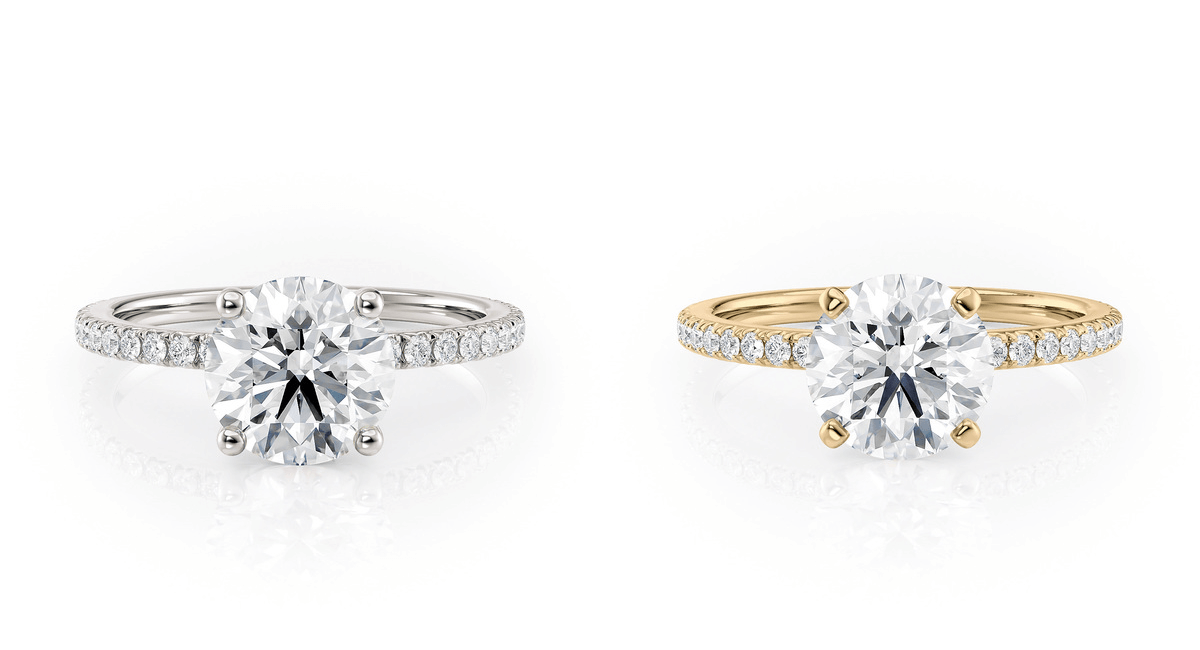The world of diamonds has seen remarkable changes in recent years, especially with the advent of lab-grown diamonds. While traditional diamonds, sourced from the Earth’s depths, have always held value, lab-grown diamonds offer an alternative that is capturing the interest of investors. But are lab-grown diamonds a viable investment? Let’s explore the potential of these sparkling stones as a financial asset.
Understing Lab-Grown Diamonds
Lab-grown diamonds, also known as synthetic or cultured diamonds, are real diamonds that are created in a controlled laboratory environment, mimicking the natural process of diamond formation. Using two primary methods—High Pressure High Temperature (HPHT) Chemical Vapor Deposition (CVD)—scientists can create diamonds that are chemically, physically, optically identical to those mined from the earth. The key difference lies in their origin: while natural diamonds take millions of years to form, lab-grown diamonds take only a few weeks.
Market Growth Popularity
lab grown diamonds investment have seen significant growth in recent years, driven by both their ethical appeal cost-effectiveness. Unlike traditional diamonds, lab-grown diamonds don’t contribute to the environmental degradation associated with diamond mining or the ethical concerns tied to “blood diamonds.” As a result, they have gained favor with consumers who prioritize sustainability social responsibility. Moreover, lab-grown diamonds are typically less expensive than their mined counterparts, making them an attractive option for buyers.
For investors, this growing market presents a potential opportunity. As more consumers embrace lab-grown diamonds, the market’s value is expected to continue rising. In fact, the global market for lab-grown diamonds is projected to grow significantly, with some estimates suggesting it could reach a value of $27 billion by 2030.
Advantages of Investing in Lab-Grown Diamonds
- Affordability: Lab-grown diamonds are generally 30-40% cheaper than mined diamonds of similar size quality. This makes them more accessible to a larger audience, driving dem. For investors, this affordability could mean that acquiring a portfolio of diamonds is more feasible, increasing the potential for returns in the long term.
- Sustainability Ethical Appeal: Consumers investors alike are increasingly concerned with sustainability. Lab-grown diamonds offer a more eco-friendly ethically sourced alternative, providing an opportunity for investors to participate in a growing industry that aligns with modern values. This can also enhance the long-term appeal of lab-grown diamonds, especially as younger generations prioritize ethical consumption.
- Quality Variety: Lab-grown diamonds are often of high quality, with many offering superior clarity color compared to mined diamonds. Additionally, the technology behind creating lab-grown diamonds allows for a greater range of customization in terms of size, shape, design. This creates an exciting market for investors looking to diversify their assets.
- Transparency: The production process of lab-grown diamonds is highly transparent, meaning there’s more consistency in quality pricing. Unlike the unpredictable nature of mining, where the supply can be affected by various geopolitical environmental factors, lab-grown diamonds offer more stability in both supply pricing, making them a more reliable investment.
Risks Considerations
While investing in lab-grown diamonds presents unique opportunities, there are some risks factors to consider:
- Market Volatility: The diamond market, both for natural lab-grown stones, can be volatile. Consumer dem for diamonds can fluctuate based on broader economic conditions, trends, shifting preferences. If the appeal of lab-grown diamonds wanes, the investment value could be affected.
- Perceived Value: Although lab-grown diamonds are chemically identical to natural diamonds, some consumers investors still view them as inferior. While acceptance is growing, lab-grown diamonds may never reach the same level of prestige or emotional attachment that natural diamonds have historically commed. This could limit their potential as a store of value.
- Resale Market: Unlike natural diamonds, man made diamonds, which can retain or increase in value over time, lab-grown diamonds do not yet have a well-established resale market. This means that selling lab-grown diamonds for a profit might be more challenging. Investors should keep this in mind when considering lab-grown diamonds as a long-term investment.
- Technological Advancements: As technology continues to improve, the cost of producing lab-grown diamonds may decrease further, potentially impacting the resale value of diamonds bought at higher prices. This constant innovation could affect the value of lab-grown diamonds over time.
How to Invest in Lab-Grown Diamonds
- Direct Purchase: Investors can directly purchase lab-grown diamonds from jewelers or online platforms specializing in synthetic diamonds. This method allows for hs-on selection of individual stones. However, it’s crucial to conduct thorough research ensure the stones come with proper certifications.
- Diamond Investment Funds: Some investment funds now include lab-grown diamonds as part of their portfolios. These funds may offer a diversified approach, spreading risk across multiple assets, including diamonds. This could be an appealing option for those who want exposure to the market but lack the knowledge or time to buy diamonds individually.
- Stock in Companies: Another indirect method of investing in lab-grown diamonds is by purchasing stocks in companies that produce or sell these stones. Companies such as Diamond Foundry, Pure Grown Diamonds, other players in the lab-grown diamond space are publicly traded could offer investors a way to benefit from the growing market.
Conclusion
Lab-grown diamonds present an intriguing promising investment opportunity. With growing consumer interest driven by ethical considerations the desire for more affordable options, the lab-grown diamond market is poised for growth. However, like any investment, there are risks involved, investors should carefully consider factors such as market volatility, perceived value, long-term prospects.
As the industry continues to evolve, lab-grown diamonds could become a mainstream investment choice for those seeking to diversify their portfolios in line with modern values. For now, investing in lab-grown diamonds offers both potential rewards uncertainties. It’s up to each investor to weigh the benefits against the risks decide if this sparkling asset is the right fit for their investment strategy.

)


